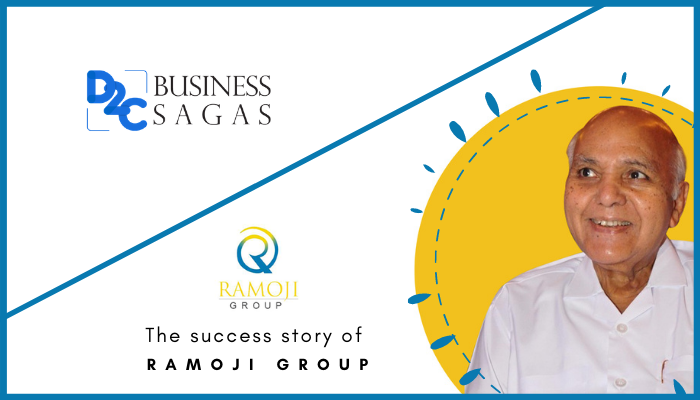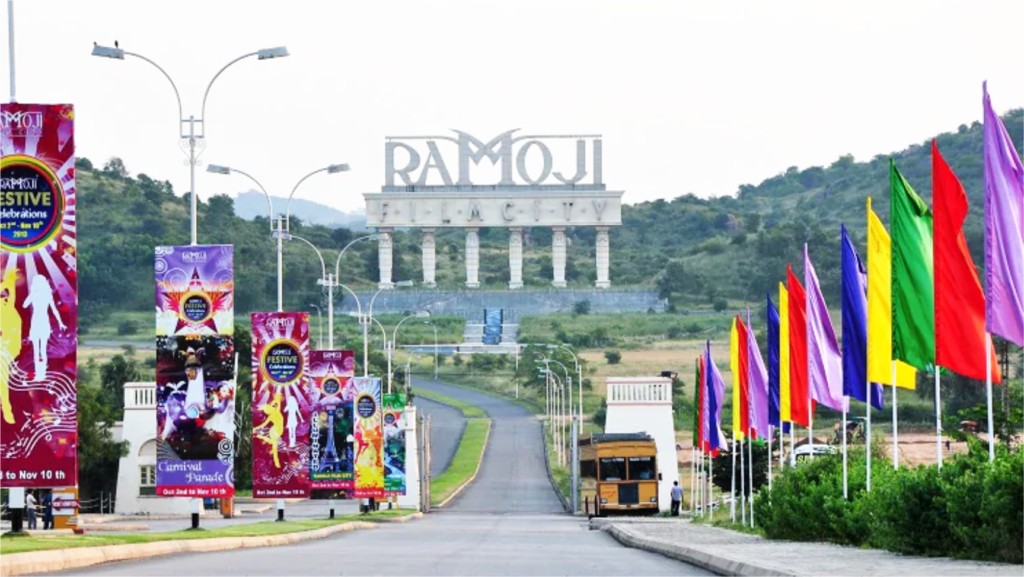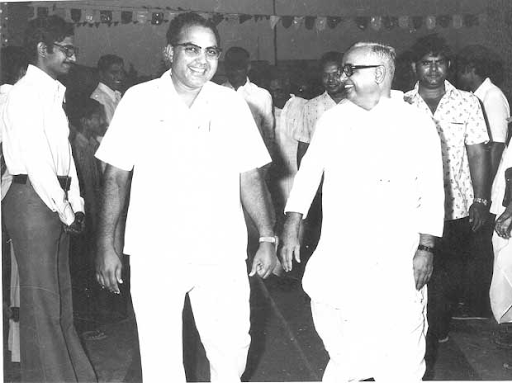The Art of Venturing out with a Clarity in the Vision: Ramoji Group’s Journey to Success

"I want to leave behind a landmark which my country will remember me by."- was the thought of Ramoji Rao, the famous business tycoon and entrepreneur of the country. The ad agency that he began with in Delhi in the 1960s, is today identified as the renowned Ramoji Group.
The Ramoji group is known for its interests spread across newspapers and magazines, hotels, films and television, investment companies, condiments and confectioneries, a 1000-acre film city, to apparels and handicrafts. Stemming from a family of farmers, Ramoji Rao’s vision to apply all he’d learnt from his soil, in his business, has made the Ramoji group what it is today.

Beginning of the Great Things
The beginning of the Ramoji group was set in Hyderabad, Ramoji Rao’s hometown, with the opening of a branch of ‘Margadarsi’- a chit fund company. He then ventured on according to the marketing needs of the branch by establishing an ad agency called ‘Kiron Ads’. Both these ventures flourished in other parts of Andhra Pradesh and soon, a hotel called ‘Dolphin’ was opened in Visakhapatnam. It was still the 1960s and the Ramoji group already had a variety of domains within it.
Old Ties with the Soil
Since the inception of companies within the Ramoji group, Ramoji Rao showed a strong connection with the farming community. In an interview, he said, "My heritage lies in the soil and my forefathers were all farmers. But I sold off all my property and to atone for this and to do something special for the farmer community I started a magazine in their language.” The magazine that he was talking about was ‘Annadata’ referring to farmers. Not only the farmers but his own hometown, language, and culture have shaped the Ramoji group in various ways. After launching ‘Annadata’ in Telugu, he subsequently entered the print media with the newspaper ‘Eenadu’, again in Telugu. It was first launched only in Visakhapatnam but soon got spread to other parts of Andhra Pradesh.
Seeing Opportunities in Problems
The newspapers, magazines, hotels, and ad agencies turned out to be very successful. But their success was not just because of the quality of the work that went for each of these ventures. It was also because of the great business acumen and vision of the founder himself. All of Ramoji Rao’s ventures start from one common point: a problem. He recognized opportunities that lied beneath these common problems and offered solutions.
Ramoji Rao went to Visakhapatnam to open the second branch of Margadarsi, but to his surprise, he couldn’t find a decent hotel to stay at. He soon realized that this was a problem many could face in the city, it being the capital of the state. And thus, the Dolphin chain of hotels started, with a 3-star hotel in Visakhapatnam catering to tourists and businessmen for a good stay. Around the same time during his stay in the city, he found out that daily newspapers there reached a day late through the post. He then decided that a local newspaper could resolve the problem, and thus, ‘ Eenadu’ took birth.

Ramoji Rao (left) with Jalagam Vengala Rao, veteran Congressman and chief minister of Andhra Pradesh from 1973 to 1978
Entering the Film Industry
During the 1980s-90s, Hindi cinema’s popularity had been growing continuously. With cinema gaining more audience, films became good prospects for investment. Ramoji Rao was impressed with the tremendous success that Hindi films were achieving, and felt that the south also needed movies that could cater to the regional audience here. And so, he decided to enter the film industry, without a big name or a huge budget.
The Ramoji group forayed into films with Ushakiron movies, Mayuri Film Distributors, and Mayuri Audio to distribute the films it made, and market the audio cassettes of the films. In this sense, the Ramoji group had always been self-sustainable. It took care of all the aspects of marketing films with companies within the group. The Ushakiron movies proved to be a success with their appeal to all age groups alike. They were light movies - family dramas, comedies, and love stories. It even created an edition of ‘Eenadu’ called the ‘Eenadu cinema’ with trivia and news about films. In the early 1990s, Ushakiron movies also ventured into satellite television by launching ETV in Telugu. By April 2000, ETV Bangla was also launched, followed by ETV Marathi and ETV Kannada, telecasting a variety of entertainment and news programmes for the local populace.
The Famous ‘Ramoji Film City’
The ‘ Ramoji Film City’ stays to date as the most innovative creation of the Ramoji group. Started in 1997, it had a message to all film creators “Walk-in with your script and walk out with your print”. The idea behind this film studio that spread over 1000 acres, was to provide the creators a platform where they could apply their creative excellence and exceptional qualities without spending much time, effort and resources.

Ramoji Rao at Ramoji Film City in 2001. Image Credits: Ritesh Sharma|The India Today Group
Adorned by gardens, temples, forts, hotels, city streets, railway stations, a palace, an airport, and other locations, the Ramoji film city claimed its ability to create an exact location for a shoot. The filmmakers had a variety of options to shoot at within the same borders. Even when it was launched, Ramoji film city claimed its fame with the technological support it came with. It has 40 studio floors, a fully equipped prop shop, and a separate division for set design and construction, state-of-the-art equipment, production staff, editing, dubbing, and sound-recording facilities.
Other Ventures
Ramoji Rao’s vision of achieving excellence in every step he undertook was difficult to achieve, but he didn’t stop. One of the major steps that brought a revolution in the print media in Andhra Pradesh was the launch of a color, tabloid-sized ‘mini edition of ‘Eenadu’ and mini-detailed paper for Hyderabad. In the 1990s, the Ramoji group moved further to launch the newspaper on the internet. It even reached that Telugu populace which resided in other parts of the country and world. Within three months of the launch, it had already gained a million users.
Ramoji Group also entered the food industry through Priya Pickles. The brand was later extended to culinary pastes and powders too. By 1992, the Ramoji group had also started a handicrafts division called ‘Kalanjali’, with the view of promoting handicrafts, cotton textiles, etc., to ensure the livelihood of Indian craftsmen. Later on, it also launched ‘Margadarsi Apparels’ expecting to produce up to 30,000 garments per day, designed for all age groups.
Looking Ahead
The Ramoji Group has come a long way from when it was set up as one company in 1962. From 2001, it became an INR 15 billion business empire with 11 holdings to its name by the year 2020. Even with such growth, the Ramoji group is still experimenting and taking atypical steps. It launched the first Urdu channel in India, ETV Urdu. It also is investing to improve its media houses technologically. In 2001, it announced an investment of 600 million and 180 million to automate its earth station and newsroom. With Hollywood films beginning to be produced in the Ramoji film city, it is also attracting attention from foreigners. It now holds the record of the largest film studio in the world by the Guinness book of world records. The Ramoji Group has thus, been nothing less than proof of the power of a clear vision and business acumen of the entrepreneur. With the focus on up-gradation and innovation, the Ramoji group will continue to soar high by utilizing its obstacles as stepping stones and turning them into opportunities.
Login to continue reading
And access exclusive content, personalized recommendations, and career-boosting opportunities.
Blogs you need to hog!

What Innovation Does For Efficiency and Competitiveness in a Corporate Sector?

Online to Offline Commerce- Everything one needs to know

How Do You Work Around Branding Guidelines To Be Guidelines And Not Limitations? | Alekhya, Brand Manager- Vivel, ITC | Dove, Unilever













Comments
Add comment